Contents
Japanese cuisine has long been appreciated by us. Many have mastered wooden sticks and savor dishes with a Japanese flavor with knowledge. Today, you can not only try them in restaurants, but also easily prepare them at home. How to do this according to all the rules, we understand together with the Tojiro trademark.
Twisted classics
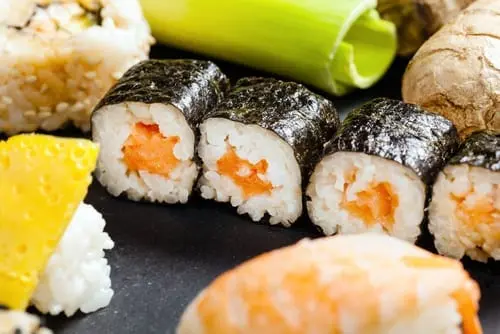
Japanese rolls are simple and easy to prepare. For this dish, we will need a fillet of lightly salted salmon, 6-8 sheets of nori seaweed, 300 g of boiled round rice and a bamboo mat. Cut the salmon fillet into thin slices with a sharp santoku knife. Fill the boiled rice with a mixture of 5 tbsp. l. rice vinegar with a pinch of sugar and salt. We spread the rice on a sheet of nori, lying on the mat with the shiny side down. Spread the salmon slices on the rice along the entire width from the edge, roll up the roll and cut it into 3-4 parts. To make the cut perfectly smooth, the blade of the santoku knife is soaked in vinegar. The Tojiro Narihira Santoku knife with a 180 mm wide blade and an ergonomic handle is exactly what you need.
A subtle thing
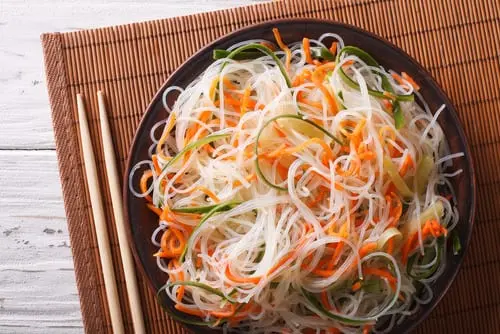
Vegetable salad with funchosa is found in a variety of variations. Steam 300 g of noodles in boiling water for 5 minutes. Cut into thin long strips of fresh cucumber. Finely chop 2 cloves of garlic. Combine all the ingredients, add 150 g of Korean carrots. To cut vegetables correctly, quickly and beautifully, it is best to take a nakiri – a special knife for vegetables, such as the F-310 Tojiro Western Knife. It is easy and convenient to work with them — slicing and chopping are performed quickly and efficiently. A dressing of 2 tablespoons of sesame oil, 2 tablespoons of soy sauce, 1 tablespoon of rice vinegar, a pinch of ginger and chili pepper will organically complement the light salad.
First-hand noodles
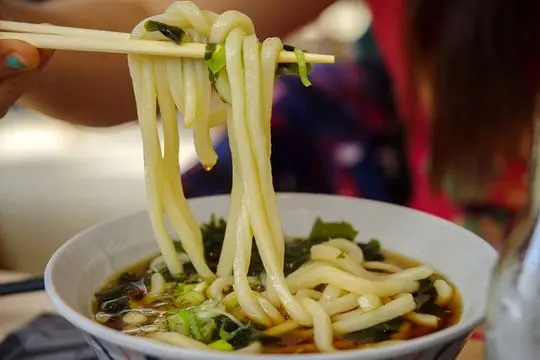
Udon noodles are very popular among gourmets. We suggest making it yourself. Knead the dough from 200 g of flour, 100 ml of water and 1 tsp of salt. If desired, you can color the water with beet juice, turmeric infusion or green tea. Knead the dough and let it rest in the refrigerator for 30 minutes. Sprinkle the work surface with starch and roll out the layer with a thickness of 3-4 mm. Wrap to the middle of the edge of the layer, laying one on top of the other, turn the seam down. Cut the dough into strips of 2-3 mm, sprinkle with starch and dry. A knife with a sufficiently long blade and possibly a more straight cutting edge, such as the F-806 gastronomic knife for thin slicing Tojiro Western or the F-808 gyuto (chef) Tojiro Western Knife, will help to achieve high-quality and even slicing.
Sunburned prawns

During the picnic season, tempura shrimps are especially relevant. We wash and dry 15-20 tiger shrimps, remove the heads with the shell, leaving the last phalanx of the tail. We make a thin incision along the back of the shrimp and carefully pull out the black veins. It is also important to make 2-3 transverse incisions on the inside of the tail. Then the shrimp will not curdle during frying. It is most convenient for this purpose to use a small and convenient knife Petty Tojiro Pro with a blade length of up to 90 mm. Roll the shrimps in flour and dip them in egg batter, 200 ml of ice water and 100 g of tempura flour. Fry them in a large amount of oil until crisp.
Salmon as it is
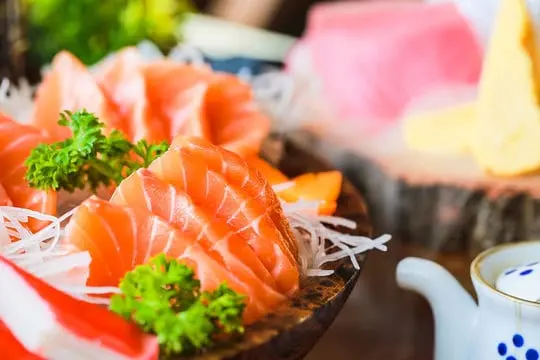
Traditional Japanese dish sashimi is made from fresh raw fish, most often salmon. You’ll need a couple of knives here. First, we properly cool the fish fillet. Then carefully remove the skin. To do this, place the fillet on the cutting board with the skin down, insert the knife under the skin and separate it from the fillet with a neat movement of the blade along the surface of the board — from the tail to the head. Next, cut the fillet into thin, beautiful slices. In this case, a special knife for sashimi (yanagi) F-1057 is indispensable. For the marinade, mix 3 crushed garlic cloves, 2 tbsp soy sauce and the juice of half a lemon. It is more convenient to clean and chop the roots with the F-800 Tojiro Western Knife. Spread the salmon slices in a glass container, sprinkle with grated ginger root and chopped green onions, pour the marinade. Cool the fish a little and serve, garnished with lemon slices and sesame seeds.
Breakfast on a grand scale
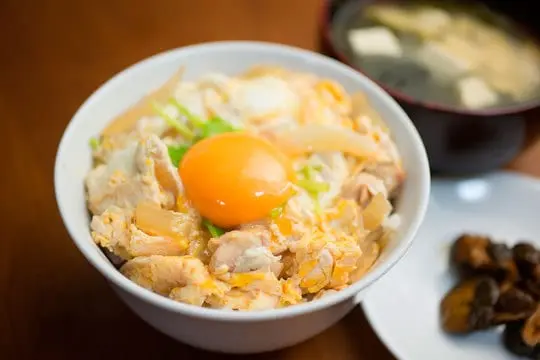
Japanese omelet oyakodon will please those who are used to having a hearty breakfast. Cut into thin strips 200 g of chicken fillet. For convenience and speed, we recommend using a gyuto chef knife with a blade of 180 mm or more, such as the Tojiro Pro series. They can also quickly and carefully cut an onion into half rings and chop the green onion feathers. Fry the meat with the onion in half rings in vegetable oil with the addition of 3 tbsp soy sauce and 1 tbsp brown sugar. Fill the fillet with 2 beaten eggs and fry like a normal omelet. Spread on a plate with a pile of 100 g of pre-cooked long-grain rice. Cover it with pieces of omelet and sprinkle with chopped green onions, you can also put the yolk right on top of the dish.
Notable bird
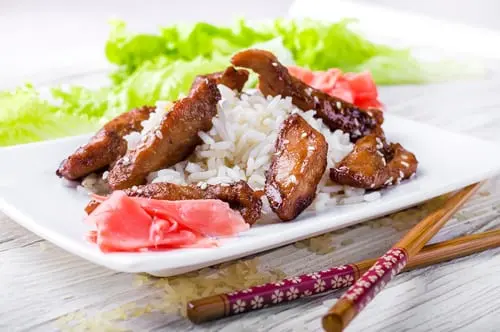
Another Japanese “bird” hit is teriyaki chicken. Take 500-600 g of chicken fillet, shins or thighs. Cut the meat into small slices and marinate for half an hour in a mixture of 5-6 tbsp soy sauce, 2 tbsp honey, 1 tsp cane sugar. Chop 3 cloves of garlic with thin plates, and 2 cm of ginger root-with small straws. The Tojiro Plus Santoku knife is a recognized all-rounder that can easily handle both slicing chicken fillet and chopping root vegetables. Another way to use it — garlic can be crushed directly on the cutting board by placing the wide blade of the satoku flat on the head and pressing the blade on the other side. Add ginger and garlic to the chicken, put it together with the marinade in a hot frying pan with oil and brown well.
Meat delight
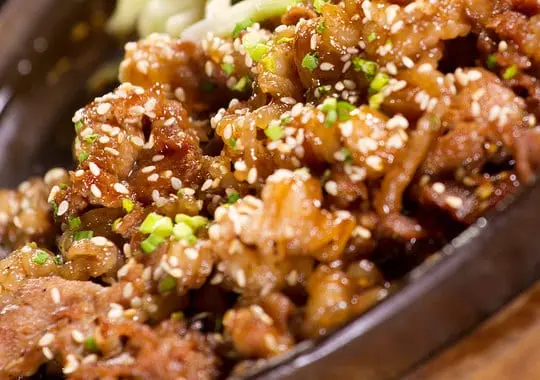
Meat eaters will appreciate the spicy beef of sigurani. Chop 500 g of meat tenderloin with a neat thin straw. With this work, the chef’s knife gyuto Tojiro Origami will perfectly cope with a convenient handle of a triangular cross-section, providing a particularly accurate position of the blade relative to a piece of meat. Mix 200 ml of water with 50 ml of sake, 4 tablespoons of soy sauce and dissolve 2 tablespoons of sugar. Add 1 tbsp. l. crushed ginger root and, if desired, hot chili pepper in thin rings. The resulting sauce is boiled in a frying pan twice, we lay the beef and bring it to readiness over low heat. To garnish with shiguren, you can serve buckwheat noodles or brown rice.
Long live miso
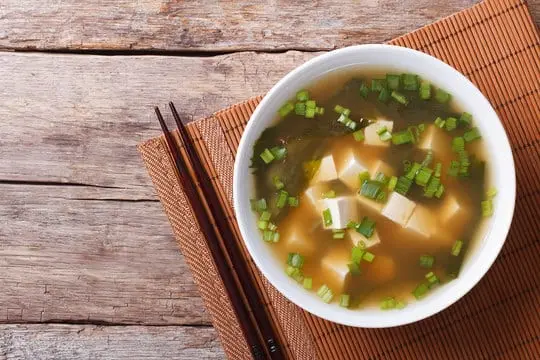
Without the traditional miso soup, the Japanese menu will be incomplete. It is based on a fork of bok choy cabbage, a few green onion feathers and a leaf of nori seaweed. Coarsely chop all the ingredients and put them aside. The Tojiro Western Knife series Nakiri vegetable knife with a rectangular blade will be indispensable here. Bring a liter of water to a boil, put 150 g of tofu cheese in cubes and cook for a couple of minutes. Add 2 tablespoons of miso paste diluted with water and immediately remove from the heat. Add the cabbage with onion and seaweed, season with 2 tsp. tamarind paste and 1 tsp. fish sauce. Tightly cover the pan with a lid and soak the soup for 5 minutes.
Tea joys
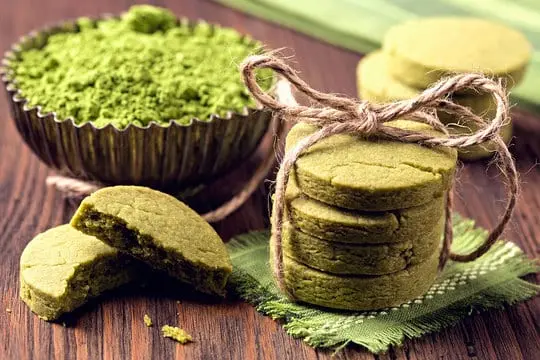
Cookies with matcha tea will conquer the sweet tooth. Knead the dough from 150 g of butter, 100 g of powdered sugar, eggs and 260 g of flour, add 1 tsp of matcha green tea powder. From the green dough, we roll out a layer of the same length and width of 9-10 cm. Slightly frozen, bake it for 20 minutes at 180°C and cut it with washers. Here, the FD-962 knife for slicing Tojiro Supreme Series bread will come to the rescue. It will make the edges of the cookies perfectly smooth!
Japanese dishes are distinguished not only by a unique philosophy, but also by a special cooking technique. Tojiro branded knives will help you to observe the culinary subtleties exactly and feel like a skilled chef. Classic Japanese cuisine is sure to please your loved ones with a rich taste palette and beauty of execution!









